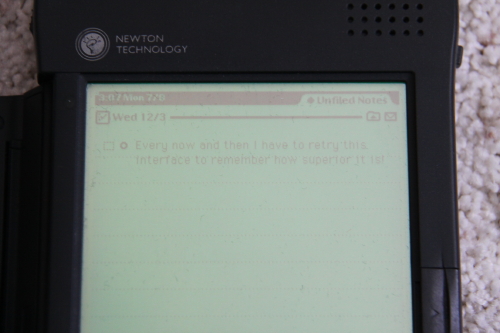Working from home…. how the cat sees the progression of state.
(Cat v. notebook?).
Good
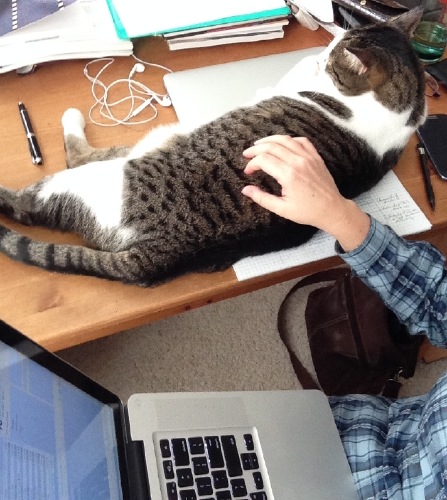
Better
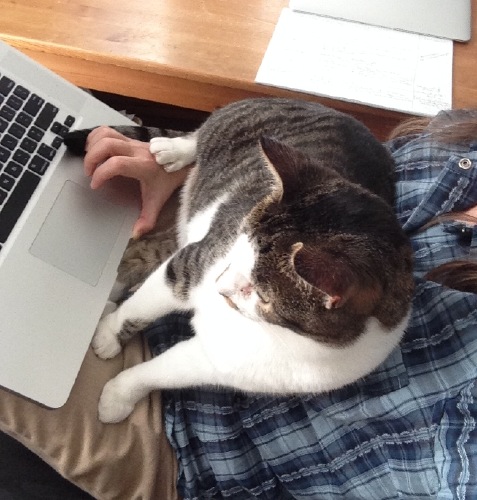
Best!
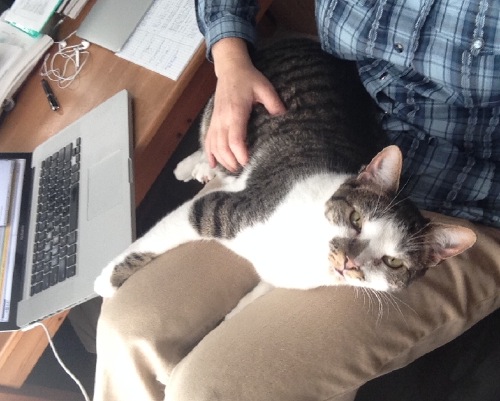
Working from home…. how the cat sees the progression of state.
(Cat v. notebook?).



The thing about weaving is that you kind of have to do it with some
regularity in order to get good at it. Okay, not exactly
unique to weaving, but I, for one, have been a little terrified of
the prospect of figuring out the warp for each project, deciding on
threading/pattern, and the actual measuring of the warp, carting it
over to the loom, and getting the loom dressed. It slows
me down — by months.
To short-circuit some of that trauma, I bought a
hand-painted warp kit at MDS&W 2012 — from Earth Guild.
Isn’t it pretty? I finally got it on the baby wolf about 10
months after I bought it. And by “onto”, I mean pretty much
that: draped. Not beamed on, threaded, or sleyed.
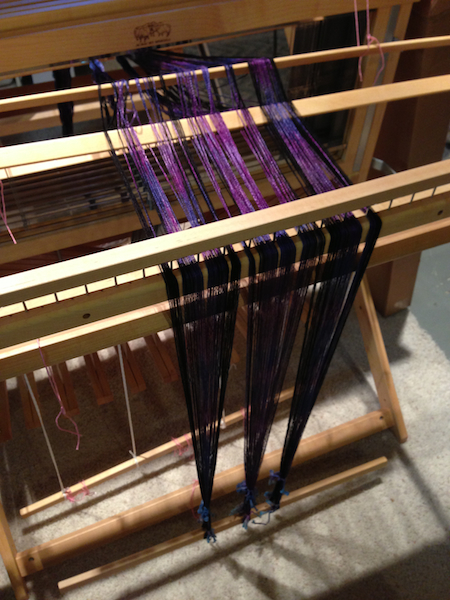
The other thing about weaving is that you have to be in the same
place as your loom in order to do it. Well, I suppose the same
is true for knitting, but needles tend to be a little more portable
than looms. For me, it’s not enough that I can fold up
the Baby Wolf and put it in the back of an empty SUV. I need
something that will fit in the back of an SUV that’s already loaded
with everything ELSE we need for a couple of months.
So — this year at MDS&W 2013, I bought another kit from
Earth Guild — this time, for a rigid heddle loom. It’s
pretty, too!
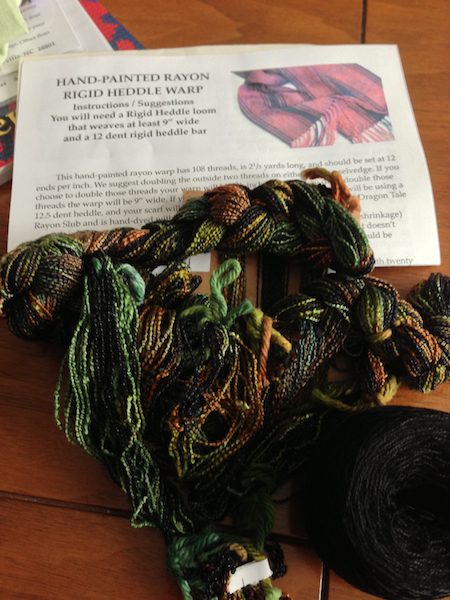
Oh, but that requires a rigid heddle loom, you say? Well,
yes. Schacht Flip 15″ fit the bill 🙂
The Flip was delivered while I was away on a business trip (of
course). Within 2 days of getting home, I had it open, set up,
and the warp was….
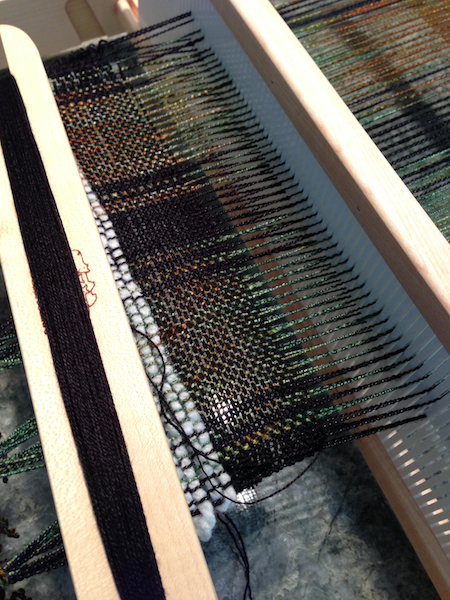
On the loom. Just like that. Wheee!
Here’s a closeup of the weaving — just plainweave, of course,
because I did not instantly dive into trying to do a multi-heddle
effort with the loom.
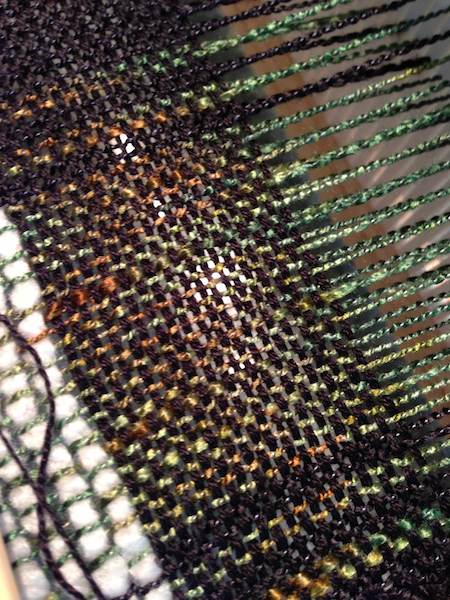
So, with the rigid heddle loom, I was off to the races! And,
as promised, the loom folded up nicely and slipped into the
already-full SUV to head away for a bit. I’m progressing
nicely with this scarf, thanks for asking 🙂 . I’m
hoping that some of the waviness of the weft will settle out when it
is wet-finished. The wonky selvedges are mine to own,
though. I hope I’ll get better at them, with practice.
As for the Baby Wolf… will I ever go back to it, now that I’ve
Flipped? You betcha. I got the threading done (and fixed
— required an emergency heddle to fix a threading mistake) the week
before we left. And, having spent the time working out a
threading plan, I have this twill pattern to look forward to (done
in waste yarn to settle the warp out):
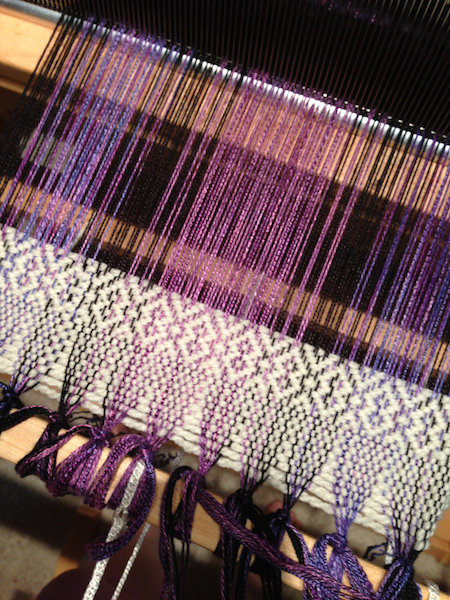
Throwing the shuttled, beating the full beater, was pretty
magical. The rigid heddle loom is a lot more fun than
nothing, and certainly people have done some pretty amazing things
with them. But I’m looking forward to getting back to the
painted warp on the Baby Wolf — maybe soon I’ll get past my
trepidation about warping it more regularly.
I’m sorry… that’s not a very imaginative blog post title, especially
after more than a year’s absence from the blog.
But, it’s a pretty accurate description of my reaction when I finally
finished the “seven year sweater”!
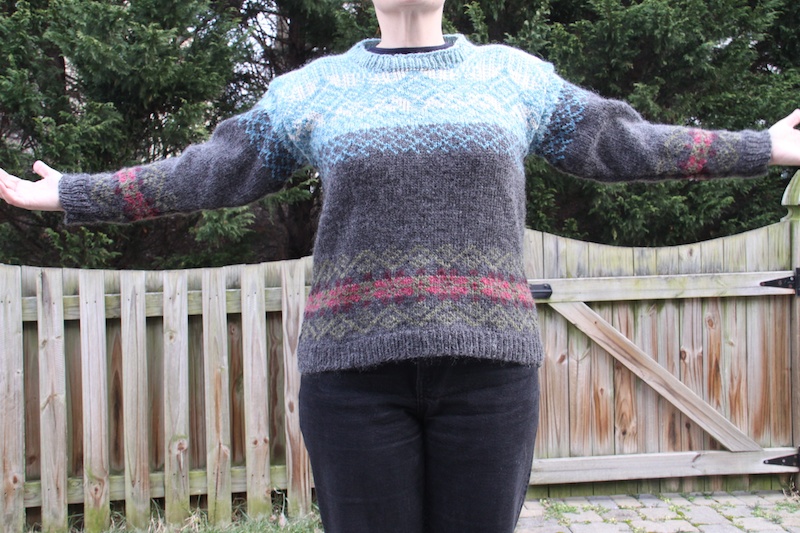
You
last saw this as a work in progress in November of 2008. At
that point, I had gotten far enough into it to understand some of the
errors I’d made as a neophyte designer. I contemplated
ripping it out and repurposing the yarn. But, I let it lounge
in its project bag for a while, then I took it out and worked on it in
a “I must knit 2 rows of this before I can knit what I really want to,
today” kind of way, and then I sucked it up and just knit the rest of
it. And mattress-seamed the sleeves and sides.
And it even fits! Which is, in itself, kind of a miracle.
Although my arms have hardly changed length, the rest of me has been
several different sizes in the 7 years since I designed this sweater!
There are more pictures and details on my Yarn
Gallery page. And, yes, there are many more projects posted
there — although I fell of the blogging bandwagon pretty seriously,
I’ve been diligent about keeping the gallery up to date. So, you
can see what I’ve been up to. Amount of work travel is directly
proportional to the relative percentage of smaller projects (socks,
shawls) knit. Sigh. Yes, I could probably figure out how
many sock projects it takes to become a United Airlines million miler.
One of the more fun recent projects was the Morehouse Farms Hedgehog
mitten, which I knit using Green Mountain Spinnery Alpaca Elegance.
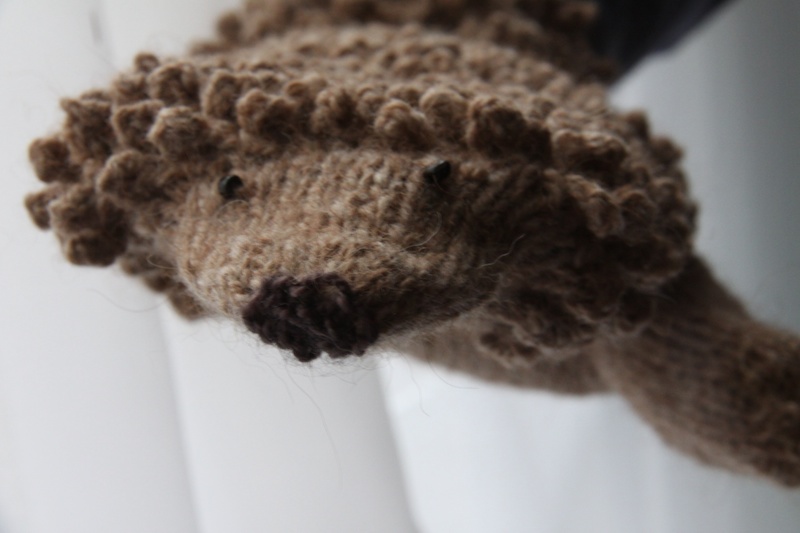
Knit the bulk of that project while attending ITU telecommunications
treaty meetings. It’s a good thing the Alpaca Elegance is so
enticing to work with — it kept my sharp, pointy knitting needles at
work, and not stabbing myself (or someone else!) for the stultifyingly exciting time it was,
to borrow a phrase the other half coined for the meetings.
And, here you have it — a year in yarn! (Finished objects, that
is). Click on any image for more project details.
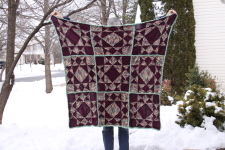
|
 |
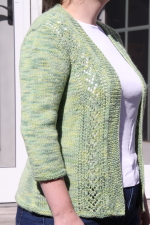
|
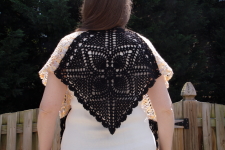
|
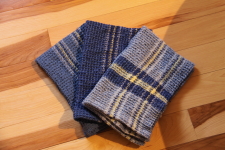
|
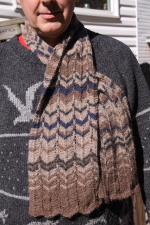 |
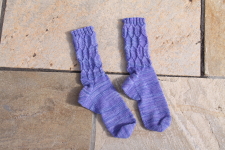 |
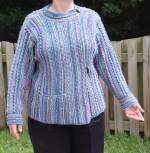 |
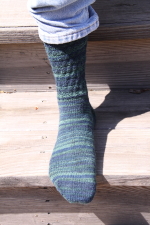 |
Four of these projects were started and finished in 2011. Four
were carried over from the previous year. And one (the crochet
cable cardi, which I’d bought
as a kit in 2007) had been a WIP for about 4 years.
Not nearly as prolific as many knitters/fibre artists in the
blogoverse, but it is what it is! I’m pretty pleased with this
outcome — there are some large projects in that batch, and I managed
to get something onto & off the big loom. Now, my challenge
for 2012 is to actually get my computer to control one or both of the
knitting machines to produce something (while carrying on with
everything else, of course!).
Weaving is fun and rhythmic — once you have the loom set
up. And, you can’t really set up a loom until you
have the parameters of your project pretty well nailed up, including
the yarns for warp and weft, as well as the sett and specific threading
pattern. While you can vary the weft yarn once you’ve started, on
a typical loom you’re pretty much fixed for sett and threading pattern
once you’ve got the loom set up. And, depending on the particular
yarns, things can look very different in the pattern once you actually
start weaving — they rarely line up in tidy little squares like on
your graph paper!
I imagine that experienced weavers have a good sense of what threading
patterns will produce, and the various effects of different types
(thicknesses, composition, colours) of yarn with those
patterns.
I, however, I can only imagine, becauseam not an experienced
weaver! And, I found I was impeded in making progress on becoming
one when I could not figure out how a pair of yarns were going to play
together for my next planned project. I really didn’t want to get
into calculating warp lengths and number of warp ends unless and until
I had some sense of how the yarns would play together. So, I
stalled for several months.
Finally, I did a couple of things to break the logjam.
First, I ordered a weaving kit (Halcyon
Yarn’s Waffle Weave Dishtowels). It includes the
yarns you need, tells you what sett to use, as well as the
threading. So, it’s just execution: measure off 402 warp
ends in various colours, sley the reed, thread the heddles, re-thread
the heddles when you realize you made a mistake 1/4 of the way in
(sigh), tie up the treadles, and you’re good to go!
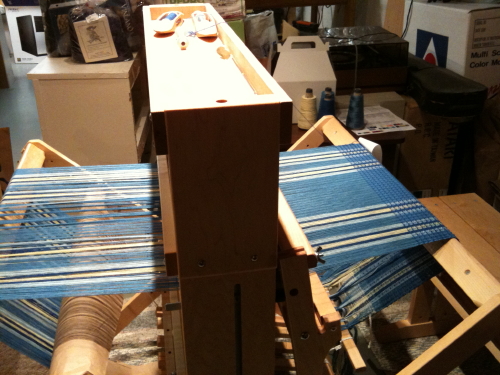
And, waffle weave is pretty! Perhaps others would understand it
intuitively from the pattern draft, but I had to actually weave by rote
for a bit before I could start to see how it was building up the
texture in the fabric:
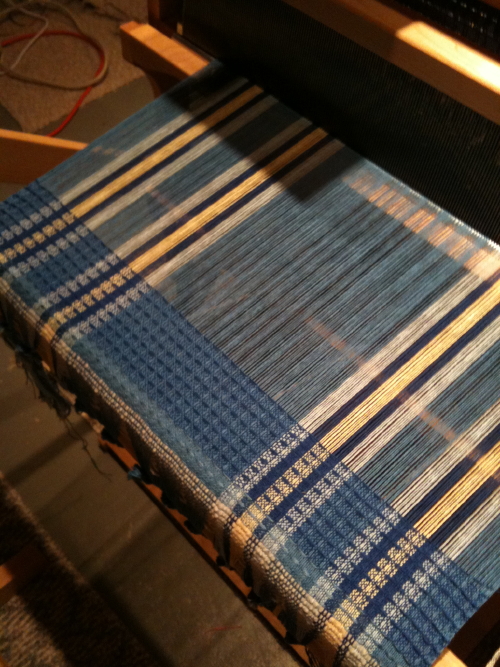
Given that it still took me a month of on-and-off work to get those
warp ends measured et cetera, it’s pretty clear it will be a while
before I’ll be an experienced weaver with the kind of “mind’s eye” for
pattern work that I describe above. I really wanted something I
can play with to see
the different possibilities with the yarn before I commit to a real
project.
So, the other thing I did was get a Northwest Pioneer loom.
This is a loom that is specifically designed to facilitate re-sleying
and re-threading mid-project. Here it is, still bolted onto
the base of its shipping crate. It’s a 15″ table loom, and to
keep that in perspective, the shipping box fit in the back seat of my
car. It’s a lovely bit of hand-worked solid maple — pretty!
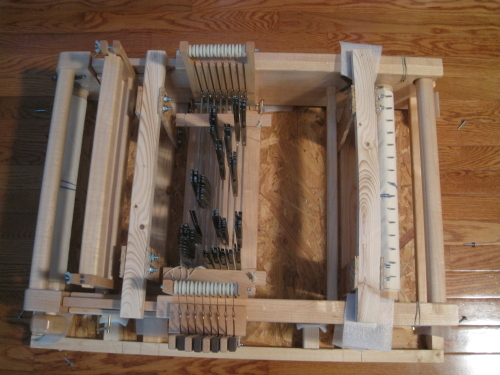
In terms of re-threading — note that the shafts in the picture above
have no “top”. The headles have a slit through which you slide
the yarn from the top — and which you can pull out and rearrange
(under loosened tension) mid-project. Likewise, you can remove
the top bar of the beater and re-sley the reed, for a different sett.
As an added bonus, it also supports
continuous warping. The pictures below show it with
its warping rails extended.
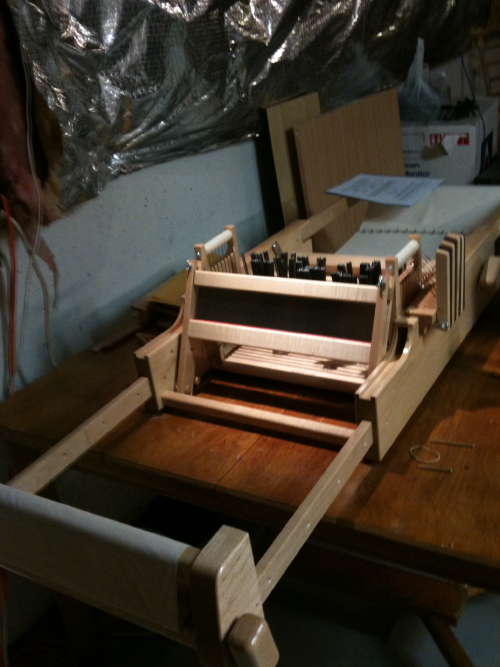
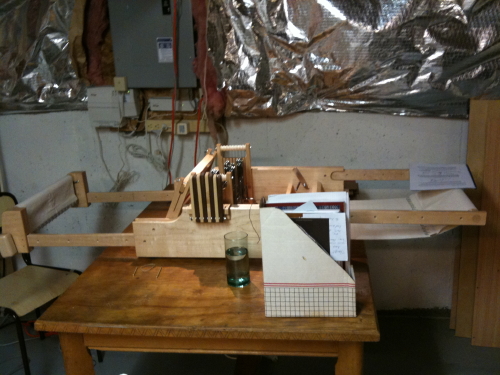
Errr, yes, pardon the lovely studio decor — my fibre equipment is
slowly taking over the basement, but we haven’t done anything to finish
it.
Within an hour or 2, I had it warped up and ready to roll, launching
into a twill pattern with the brown linen warp and variegated pink,
shiny acrylic yarn:
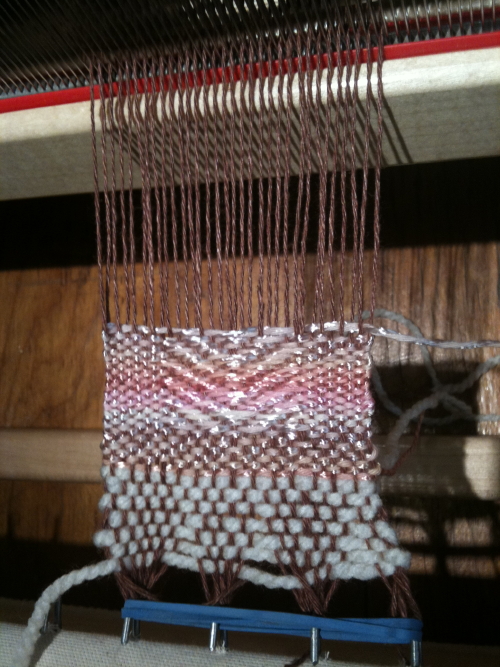
Among the things I would not have predicted accurately — the weft
dominance.
Satisfied with that experiement, I re-threaded the warp to a different
pattern, and test-drove it some more:
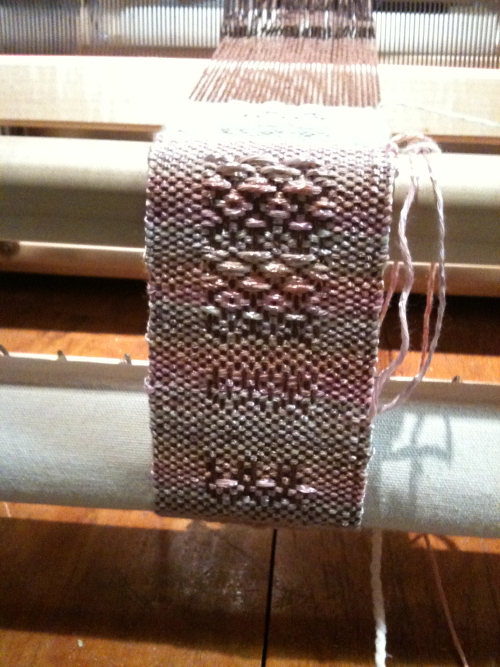
Again, the weft dominated. For this, I tried (completely)
different yarn — a wool of finer gauge:
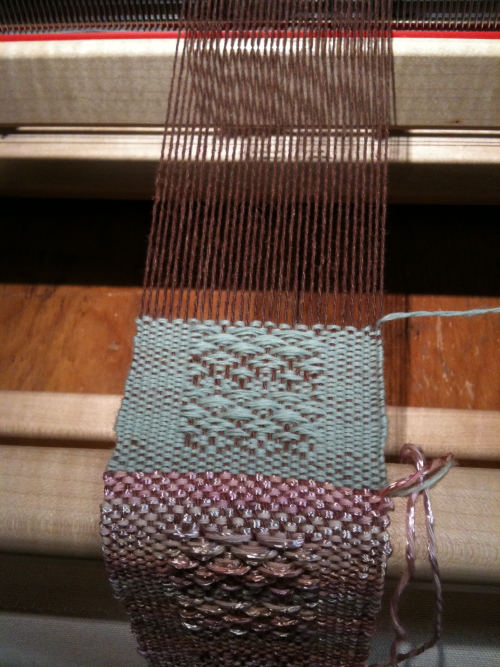
And, the experimentation continues. But, by the time I’m done
playing, and I have it off the loom and wet-finished, I will have a
very firm sense of what I want to do with my pinks and brown, and I’ll
have the confidence needed to plan and set up the project on the big
loom — a 10″ wide table runner is the plan.
And, I’ll start throwing more yarns on the Pioneer to see how
they work together 🙂
Well, you know that “one” is
an unstable number for looms, right? People who have one loom
either decide they don’t like weaving and get rid of it… or they are
hooked, and more follow…
Haggis, that
is.
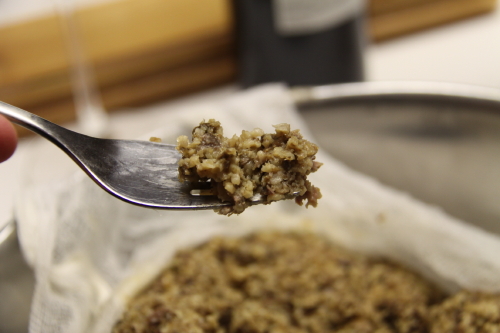
I’ve heard haggis described as “a sheep, turned inside out”.
Traditionally consisting of all the bits of a sheep you weren’t going
to serve up in recognizable form (the “offal”) made into a sausage and
cooked in the
sheep’s stomach. Well, you asked. And before
you get disgusted, set
down that forkful of breakfast sausage you have in hand, and give it a
good, hard think: its ingredients aren’t a lot different.
Anyway, I’ve enjoyed haggis from and in Scotland. Sadly, it’s not
the sort of thing that is easily importable, anywhere, labeled as
food. As I’ve only ever managed to get to Scotland once, it
occurred to me that the only way to get a haggis fix would be to figure
out how to make it myself… though I drew the line at having to
cook it in a sheep’s stomach.
Pictured above is Haggis the Second. Haggis the First was
pleasant, but really more of a lamb hash — made with ground lamb
and rolled oats, it tasted far more of, well, lamb than my recollection
of something slightly chewy, spicy, and oaty. I decided I needed
to tackle the oat problem, as well as introduce some of the more
“intense” bits of meat (offal).
First up, the oats. And, here’s a visual aid:
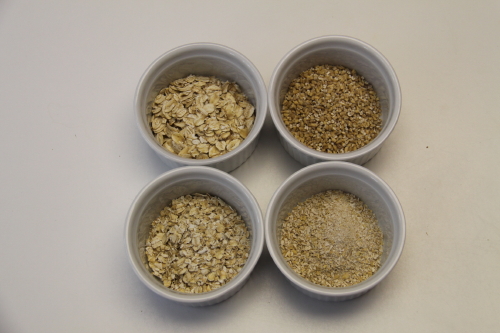
Clockwise, from the top
left:
Naturally, I decided I’d better go Scottish for this application.
Unfortunately, I didn’t have any in the cupboard. Wasn’t really
sure where to find them around here, either. So, I took the
simple route, and ordered online from the
MegaOnlineEmporium. I was only mildly put off by the fact
that I had to purchase 4 20oz packages (5lbs). Then there was an
unfortunate collision betweent their choice of CutRateShipper and some
bad weather in our area, which lead to me exercising my Angry Customer
Rights when the 2-day delivery still hadn’t shown after 5 days, and
another box was sent (free of charge, overnight, free of charge, with
ReputableShipper). Never mind that there was more weather — the
second box was on my doorstep the next day. And a few days later
(making it a week late), the first box. “Sorry, no returns on
grocery items”. I had 10lbs of Scottish oatmeal (in convenient
store display boxes):
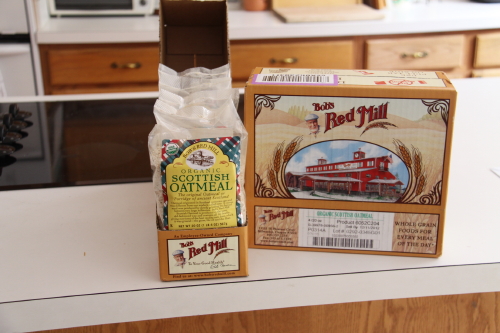
For reference, that is enough for Haggis the 2nd through 16th.
Moving on. To get that nutty flavour, I toasted the 2 cups of
oats:
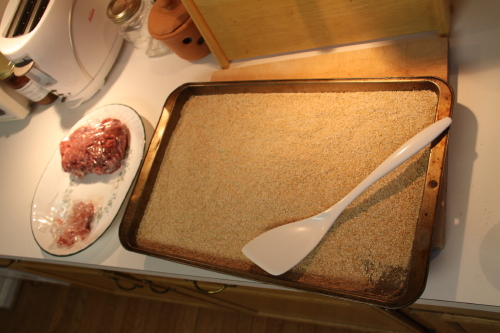
And then the trick was to get the proper meat texture. Apart from
the 1lb of ground lamb pictured above (beside the toasted oats), I
boiled 1/2 lb beef liver and 1/2 lb beef heart, with onions. That
essentially cooked the meats, and made a broth.
Offal about to be chopped —
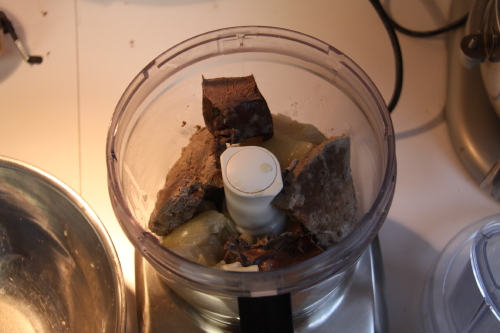
Mixed all together with ground lamb, toasted oats, spices, and ready to
go (cheesecloth, not sheep stomach):
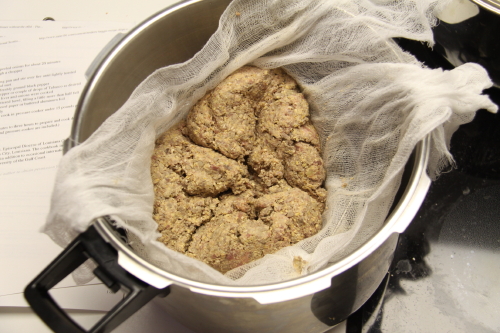
A couple of hours of steaming (using that fine broth) — voila!
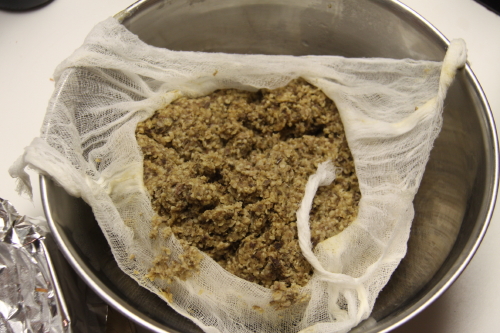
My (completely non-authoritative) opinion: the texture really
worked, and I need to work on the spices.
Of course, I’m going to have to get some proper haggis soon to do
some taste comparison!
I have long struggled with finding the right way to keep track of
calendars, lists, plans, etc, while on the go. I was an “early
adopter” of the whole “Personal Digital Assistant” (PDA) thing. I
had one of the early (though not earliest) Apple Newtons, and bought a
final generation Newton
MessagePad 2100 in 1998, just weeks before Steve Jobs announced
that Apple was dropping the whole product (and screwing over thousands
of 3rd party application developers — you’d’ve thought they’d learned
a lesson? I doubt many of them are writing iPhone apps).
The Apple Newton was cool. It was quite powerful as a digital
assistant, and even occasionally useful for things like taking notes in
meetings, when you didn’t want to bring a luggable notebook (if you
even had one). But, it wasn’t a fully-fledged
computer, and had challenges sync’ing seamlessly with your desktop
applications. The Palm got that part right — drop your
device in its cradle and press a button to sync.
After the Newton, I went through several generations of Palm devices
(only some of them died from
deceleration trauma!), and my last one, the Tungsten T3, is still
sitting in its cradle, plugged into my computer. I stopped
carrying it around last year when I finally found an iPhone app that
could do the T3’s last remaining task: manage my grocery
list.
Which is not to say that the iPhone does all the things I used to do
with the Newton. I suppose I could download a Libertarian quiz
app for it. But, mostly, I gave up on using these small devices
to manage my increasingly complex (and possibly indicative of neurotic
leanings) ToDo lists, etc.
It all kind of felt like reverse progress.
So — when I saw someone with an 11″ Macbook Air, the week before
Christmas, a number of threads wound together in a momentary
flash: here was a device that was not a lot bigger than the
Newton, and only fractionally bigger than an iPad, but which could
support all those new lists and calendars and applications as well as be a reasonable sole
compute platform for a week’s business trip. YMMV, of course, but
this made a lot more sense for me than an iPad, cool though they
are.
Enough about me — let’s compare the MessagePad 2100 and the 11″ Air,
shall we?
Okay — the Newton has a smaller surface area:
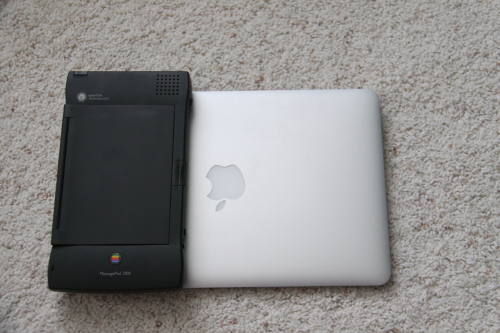
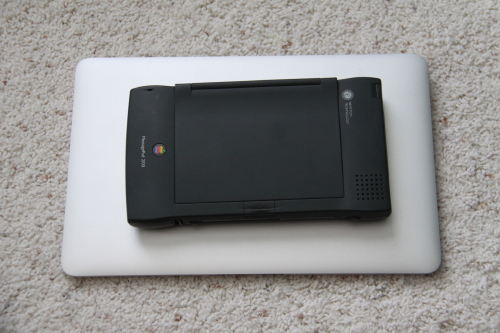
But it is at least twice as thick as the Air:
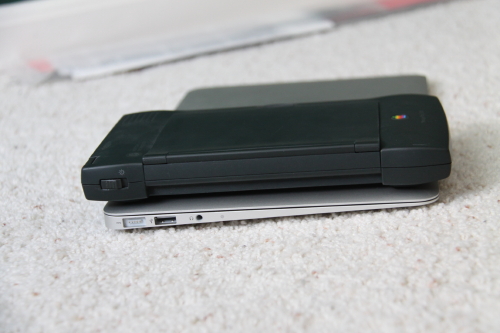
The Newton (sans keyboard) is most of a pound lighter than the Air:
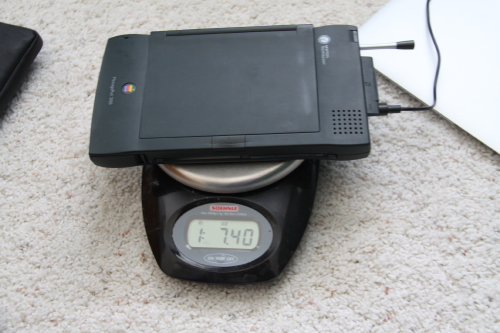
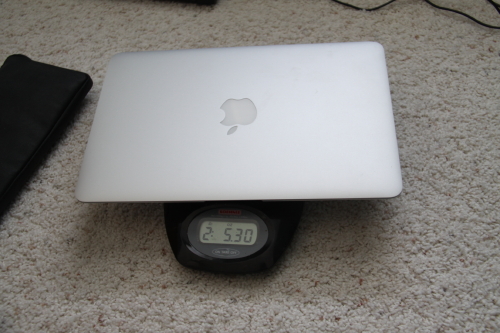
And it has genuine PCMCIA slots for expansion!
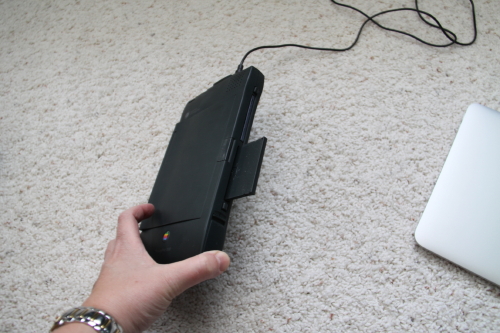
But, when it comes time to set up for work, while the Newton’s keyboard
has a much nicer feel (key travel), frankly the Newton/keyboard combo
is a lot harder to balance in your lap:
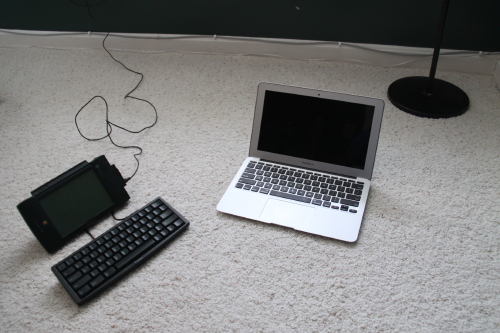
Why, yes, the Newton does still work! (Battery is fried, though):
